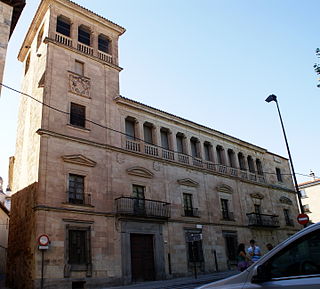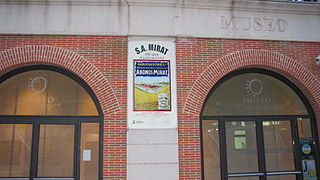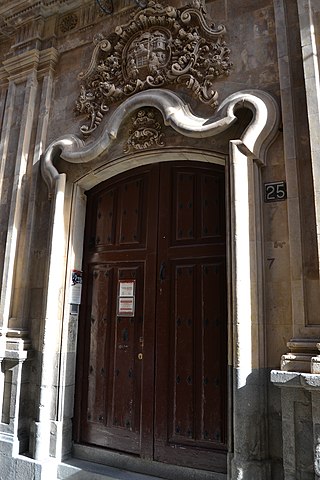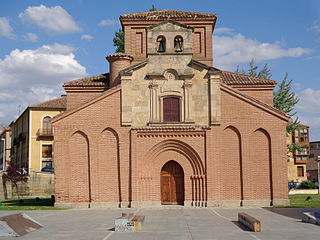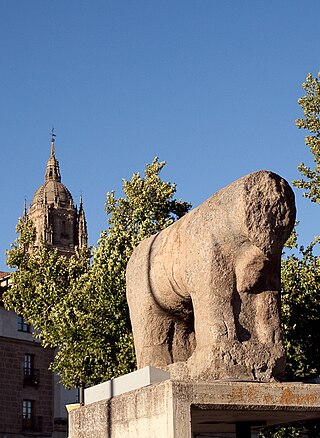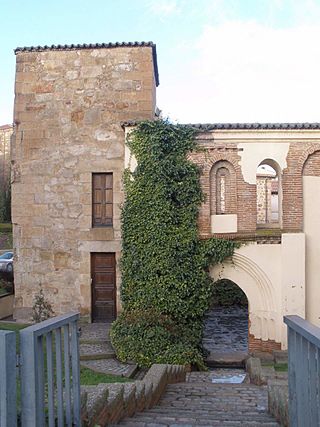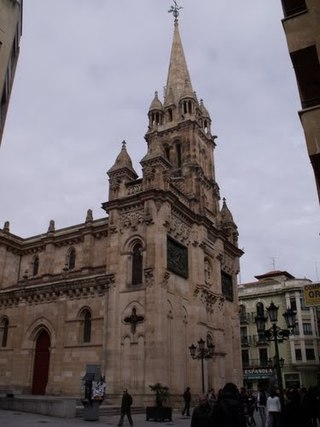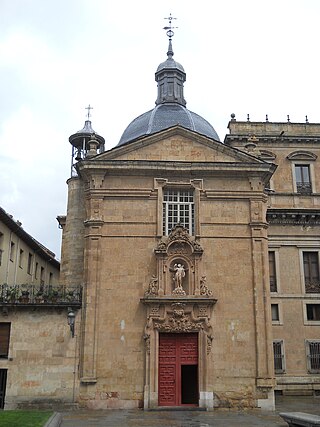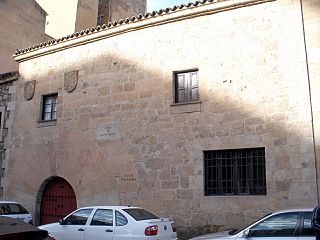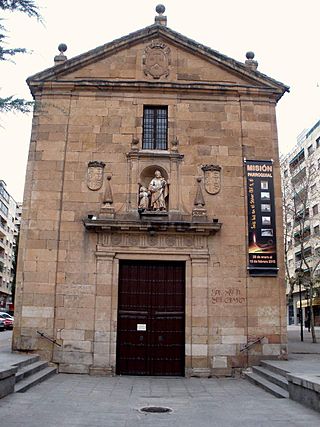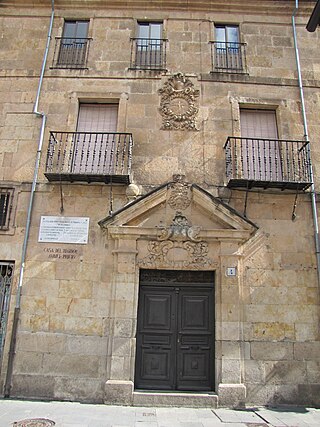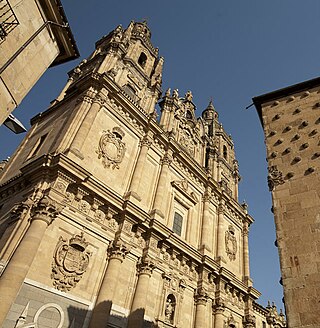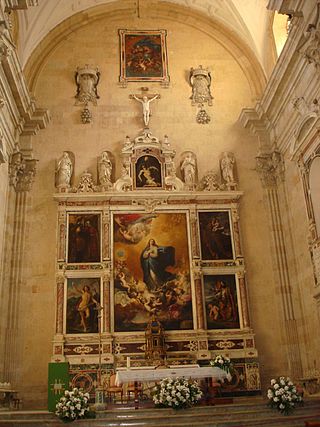32 Sights in Salamanca, Spain (with Map and Images)
Legend
Premium Sights
Book tickets, guided tours and activities in Salamanca.
Guided Free Walking Tours
Book free guided walking tours in Salamanca.
Welcome to your journey through the most beautiful sights in Salamanca, Spain! Whether you want to discover the city's historical treasures or experience its modern highlights, you'll find everything your heart desires here. Be inspired by our selection and plan your unforgettable adventure in Salamanca. Dive into the diversity of this fascinating city and discover everything it has to offer.
Sightseeing Tours in SalamancaActivities in Salamanca1. Cueva de Salamanca
The Cave of Salamanca is a legendary enclave in the city of Salamanca (Spain) where, according to popular tradition, the Devil taught. This cave corresponds to what was the crypt of the now non-existent church of San Cebrián.
2. Palacio de Monterrey
The Palace of Monterrey is a building in the Spanish city of Salamanca, one of the greatest exponents of the Plateresque artistic style. Built by the III Count of Monterrey, it is currently owned by the House of Alba, which is the owner of that county. It was a building much admired and imitated in the nineteenth century, giving rise to the so-called Monterrey or neo-plateresque style, a historicism that took up the aesthetics of the plateresque.
3. Salamanca
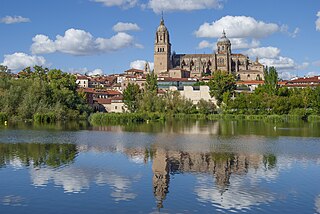
Salamanca is a municipality and city in Spain, capital of the province of the same name, located in the autonomous community of Castile and León. It is located in the Campo Charro comarca, in the Meseta Norte, in the northwestern quadrant of the Iberian Peninsula. It has a population of 144,436 registered inhabitants. Its stable functional area reaches 203,999 citizens, which makes it the second most populated in the autonomous community, after Valladolid. Salamanca is known for its large number of remarkable Plateresque-style buildings.
4. Plaza Mayor
The Plaza Mayor is a large plaza located in the center of Salamanca, Spain used as a public square. It was built in the traditional Spanish baroque style and is a popular gathering area. It is lined by restaurants, ice cream parlors, tourist shops, jewelry stores and a pharmacy along its perimeter except in front of the city hall. It is considered the heart of Salamanca and is widely regarded as one of the most beautiful plazas in Spain. It is connected to the shopping area Calle del Toro from the northeast, Calle de Zamora from the north, the restaurants on Calle de Concejo from the northwest, Calle del Prior and the small Calle de la Caja de Ahorros from the west as well as Plaza del Corrillo from the south.
5. Casa de Doña María La Brava
The house of Doña María la Brava is a private house built around 1485, a great representative example of the houses of the Spanish nobility of the second half of the fifteenth century. It is located in the Plaza de los Bandos, in the city of Salamanca (Spain).
6. Casa de las Muertes
The House of Deaths is a house designed by the architect Juan de Álava in the historic center of the city of Salamanca (Spain). The popular name of the house responds to a mixture of popular legend and history. The house has four skulls carved in stone that, like a corbel, seem to hang from the jambs of the two upper windows of the façade. This ornamental feature, together with a murder of four inhabitants at the beginning of the nineteenth century, gave it as a popular name: "House of Deaths".
7. Catedral Nueva
The Catedral de la Asunción de la Virgen, popularly known as New Cathedral is, together with the Old Cathedral, one of the two cathedrals of Salamanca, Castile and León, Spain. It is the seat of the diocese of Salamanca. It was constructed between 1533 and 1733 mixing late Gothic, Plateresque and Baroque styles. It was commissioned by Ferdinand V of Castile. It is one of the largest cathedrals in Spain in size and its bell tower, at 92 meters high, is also one of the tallest.
8. Catedral Vieja
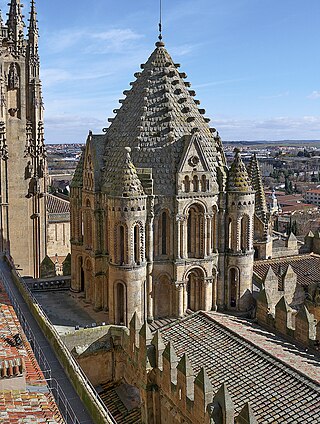
The Cathedral of Santa María, known as the Old Cathedral, is one of the two cathedrals in Salamanca, Castile and León, Spain. Founded by Bishop Jerome of Périgord, its construction began in the first third of the 12th century and was finished at the end of the 14th century, in Romanesque and Gothic style. It was finished thanks to the impulse given to the works by Bishop Alfonso Barasaque. It is dedicated to Saint Mary of the See.
9. Fachada de la Universidad de Salamanca
The façade of the University of Salamanca dates from 1529 and belongs to the Plateresque style, which was developed in the first 30 years of the sixteenth century. It is characterized by a meticulous and abundant decoration. For many, this façade is the masterpiece of Spanish Plateresque.
10. Museo de Art Déco y Art Nouveau Casa Lis
The Museum of Art Nouveau and Art Deco of Salamanca, in Casa Lis, is a museum that houses a collection of furniture and objects representative of the decorative arts. It was inaugurated in the spring of 1995 with funds from the donation that the collector Manuel Ramos Andrade made to the city.
11. Iglesia de San Martín
The church of San Martín is a Spanish Romanesque church located in the Plaza del Corrillo and next to the southern bay of the Plaza Mayor in Salamanca. The church was built on a hermitage dedicated to San Pedro in the twelfth century, specifically in the year 1103 on the initiative of Count Martín Fernández, in the neighborhood of Los Toresanos, during the repopulation of the city led by Raymond of Burgundy by order of King Alfonso VI of León. At that time, in 1173, it was called the church of San Martín del Mercado or San Martín de la Plaza. The church is currently embedded between modern buildings, it has undergone numerous restorations throughout its history. It was declared a National Historic-Artistic Monument in 1931.
12. Puente Romano
The Roman bridge of Salamanca, also known as Puente Mayor del Tormes, is a Roman bridge crossing the Tormes River on the banks of the city of Salamanca, in Castile and León, Spain. The importance of the bridge as a symbol of the city can be seen in the first quartering of city's coat of arms. It has been known traditionally as puente mayor and as puente prinçipal which gives access to the southern part of the city. The bridge as it currently appears is a result of several restorations. One of the disasters that most affected it was the Flood of San Policarpo on the night of 26 January 1626. It was declared Artistic Historic Monument on 3 June 1931, and Bien de Interés Cultural in 1998. Until the beginning of 20th century it carried the main road into the city, and continued to bear heavy traffic until 1973. Since the construction of a third bridge for road traffic it remains exclusive for pedestrians.
13. Iglesia de San Marcos
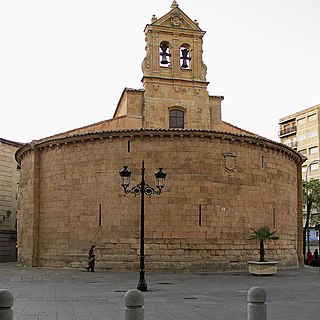
Founded at the beginning of the twelfth century, this Church of San Marcos is located on the outskirts of the historic center of Salamanca (Spain), located in "Puerta Zamora". It stands out for its circular floor plan and architectural characteristics, in Romanesque style. The Church has witnessed the history of Salamanca from its repopulation to the present day, with great importance of the Royal Clergy. Currently it continues to have its parish function and is a place of interest in the city of Salamanca.
14. Capilla de la Vera Cruz
The Church of the Vera Cruz, located in the city of Salamanca, is a Baroque temple that is the seat of the Illustrious Brotherhood of the Holy Cross of the Redeemer and the Immaculate Conception, its Mother. the oldest of the penitential brotherhoods in the city. It is referred to indistinctly as Church, Hermitage and more commonly, Chapel.
15. Iglesia de San Juan Bautista de Barbalos
The Church of San Juan Bautista de Barbalos in Salamanca, Spain, is a Romanesque church founded in 1150 by the Knights of the Order of the Hospital of San Juan de Jerusalem. It owes its name to the invocation of Saint John the Baptist and to the town of Barbalos, where the order had extensive possessions.
16. Iglesia de San Julián y Santa Basilisa
The church of San Julián and Santa Basilisa is a church of Romanesque origin in Salamanca renovated in the seventeenth and eighteenth centuries, declared an Asset of Cultural Interest with the category of Monument by publication in the BOE of August 15, 1983.
Wikipedia: Iglesia de San Julián y Santa Basilisa (Salamanca) (ES)
17. Parque Huerto de Calixto y Melibea
The Huerto de Calixto y Melibea is a 2,500 square meter garden located in the old town of the city of Salamanca (Spain). It is so named because it is inspired by the famous garden of the tragicomedy of Fernando de Rojas, the Tragicomedy of Calisto and Melibea. It is located on the slope of the old wall of Salamanca at the foot of the River Tormes. It is currently a park that can be visited of a romantic nature because of the love story of the characters in love with the work of Fernando de Rojas: Calixto and Melibea. It was inaugurated on June 12, 1981.
18. Domus Artium 2002 (DA2)
DA2 Domus Artium 2002 is a contemporary art centre located in the city of Salamanca (Spain) and inaugurated in April 2002 on the occasion of the European Capital of Culture. It is built on what was the old provincial prison, a building built in 1930 and renovated by the architect Horacio Fernández del Castillo as a museum space, preserving original elements such as the doors of the cells and the original iron grille.
19. Palacio de Orellana
The Palace of Orellana, located on Calle San Pablo, on the corner of Calle de Jesús in Salamanca (Spain), also known as the Palace of the Marquis of the Conquest or the Marquis of Albaida, is an interesting example of classicist architecture, with Mannerist influences. It was built by Canon Francisco Pereira de Anaya, in 1576. The Cantabrian master Juan Ribero de Rada also participated in its construction.
20. Museo del Comercio y la Industria
The Museum of Commerce and Industry, in Salamanca (Spain), is a museum dedicated to recovering and preserving the memory of economic, industrial and mercantile activity, especially in the city and its province. The creation of the museum was promoted by the City Council of Salamanca and by the Official Chamber of Commerce and Industry of Salamanca, it was inaugurated in January 2006. Built in the old cisterns of solid brick pillars and vaults that have been carefully restored to house inventions and innovations that once solved the problems of manufacturers, sellers and consumers.
21. Casa-Museo de Miguel de Unamuno
The Unamuno house-museum is a house located in the historic center of the city of Salamanca (Spain). It is a house belonging to the University built since the eighteenth century and dedicated to the Rectory House during its mandate. It is known for having been the place where Miguel de Unamuno lived when he was Rector of the University of Salamanca for the first time. Since the fifties it has been a museum dedicated to the writer's life and stay in Salamanca (1900-1914). The Unamuno house-museum is part of the Archives and Libraries Service of the University of Salamanca.
22. Iglesia de Santiago
The church of Santiago del Arrabal is a Roman Catholic church located on the banks of the Tormes River in the city of Salamanca (Spain). Its construction dates back to the twelfth century, being one of the oldest in Salamanca. It is located in the vicinity of the Roman bridge of Salamanca and the stone boar. It is one of the churches near the Silver Route before the entrance to the city on the Jacobean pilgrimage. The interior was completely baroque in the eighteenth century due to the transformations and rehabilitations that were made. The church was important in the celebrations of the feast of Santiago in which the representatives of the city council came on horseback preceded by a herald with a flag.
23. Toro-verraco ibérico
The verraco of the bridge in Salamanca, Spain, is an Iron Age stone statue depicting a bull, placed at the entrance of the Roman bridge. Verraco is a general term that refers to the stone statues of animals made by the Vettones, one of the pre-Roman peoples of the Iberian Peninsula. In Spanish the word verraco means "breeding pig", but other animals such as bulls and bears were also represented.
24. Ruinas de la Iglesia de San Polo
The church of San Polo was a religious temple that is currently in ruins. These ruins currently make up a public square and are partially integrated into a hotel. They are located southwest of the city of Salamanca in the vicinity of the Tormes River. It was located outside the walls, in the so-called Portogal neighbourhood in a position very close to the old Puerta de San Pablo, which has now disappeared. It was built in the twelfth century. A strong restoration of the church was carried out in the sixteenth century that maintained worship inside until the nineteenth century. The temple was abandoned at the end of the nineteenth century, the beginning of its ruinous state. The cult was moved to the Convent of San Esteban and later to the church of the Trinitarians, where it remains as the parish of San Pablo. At the beginning of the twenty-first century they are considered historical ruins.
25. Iglesia de San Juan de Sahagún
The church of San Juan de Sahagún in Salamanca, in neo-Romanesque style, is dedicated to San Juan de Sahagún, patron saint of the city. Its main façade is located on Calle Toro. The church of San Juan de Sahagún, by the architect Joaquín de Vargas, was built in 1896, in a style reminiscent of the Romanesque of the old cathedral inside, and, more specifically, the Torre del Gallo, on its exterior façade. Bishop Cámara ordered it to be built.
26. Iglesia de San Sebastián
The church of San Sebastián is a temple located in Salamanca, in the Plaza de Anaya, adjacent to the Colegio Mayor de San Bartolomé. On October 6, 2011, the complex of the Anaya School, Hostelry and Church of San Sebastián was declared an Asset of Cultural Interest with the category of Monument.
27. Casa de Santa Teresa
The house-convent of Santa Teresa is a house where Santa Teresa de Jesús lived in Salamanca. The house was owned by Commander Juan Antonio Ovalle Prieto and is close to the Church of San Juan de Barbalos. Its construction dates back to the end of the fifteenth century. Santa Teresa will live in the city, right in this house, for a period of almost four years.
28. Iglesia de Santa María del Monte Carmelo
The church of Santa María del Monte Carmelo is a small Baroque church in Salamanca, a remnant of the disappeared convent of Discalced Carmelites of San José, founded by Santa Teresa de Jesús in 1570.
Wikipedia: Iglesia de Santa María del Monte Carmelo (Salamanca) (ES)
29. Casa del Regidor Ovalle Prieto
The Ovalle house is a Baroque style house in the historic center of the city of Salamanca (Spain). The house has three floors and a central coat of arms by Juan Antonio Ovalle Prieto. Miguel de Unamuno lived there and died. It should not be confused with the Unamuno House-Museum that is on Calle Libreros.
30. Casa de Don Diego Maldonado
The house of Don Diego Maldonado is a manor house that is located in Salamanca in front of the apse of the Church of San Benito. It is the work of Juan de Álava for Diego Maldonado Rivas, waiter of Alonso de Fonseca y Ulloa, in 1531.
31. La Clerecía
La Clerecía is the name given to the building of the former Real Colegio del Espíritu Santo of the Society of Jesus, built in Salamanca between the 17th and 18th centuries. It is of baroque style. It differs the college, with an interesting cloister, and the church, with an impressive facade of three bodies. The name of Clerecía is due to an abbreviated denomination of its belonging to the Real Clerecía de San Marcos after the expulsion of the Jesuits from Spain.
32. Convento de Las Agustinas
The convent of the Augustinian Sisters and the church of the Immaculate Conception form a cloistered convent complex located in the historic center of the city of Salamanca. It was declared a National Monument by Decree of April 15, 1935.
Wikipedia: Convento de las Agustinas e Iglesia de la Purísima (Salamanca) (ES)
Share
Disclaimer Please be aware of your surroundings and do not enter private property. We are not liable for any damages that occur during the tours.
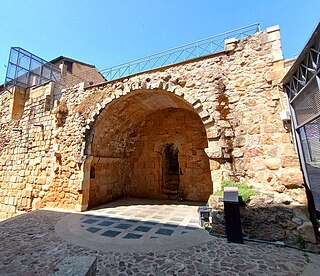
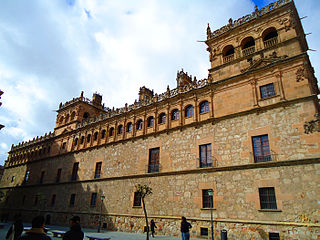
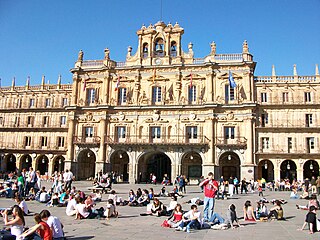
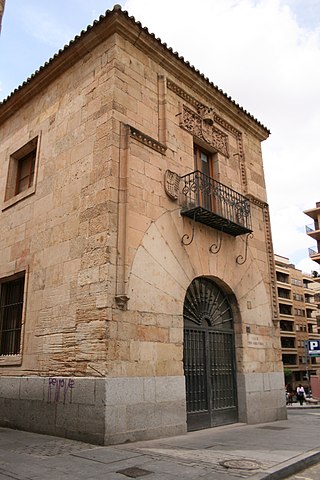
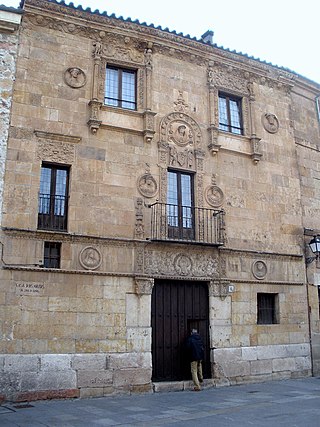
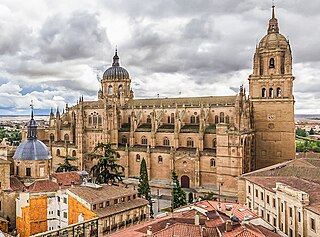

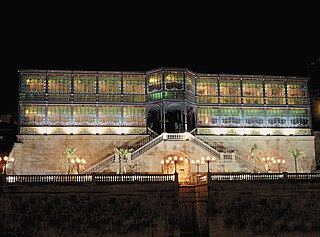
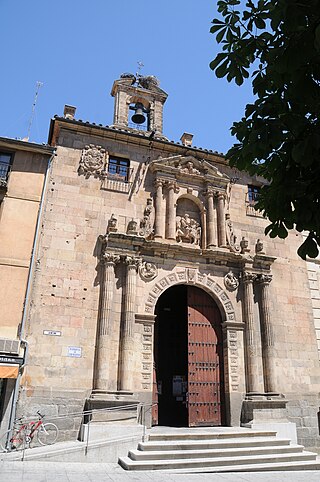
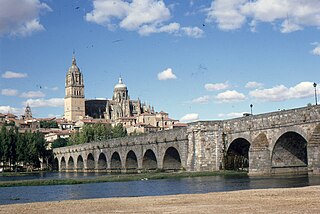
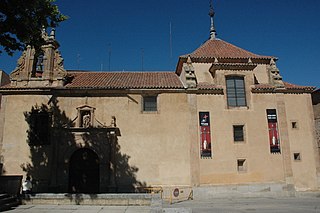
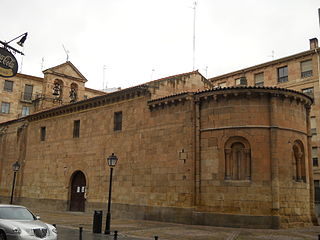
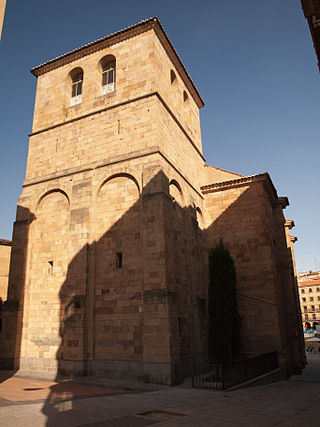
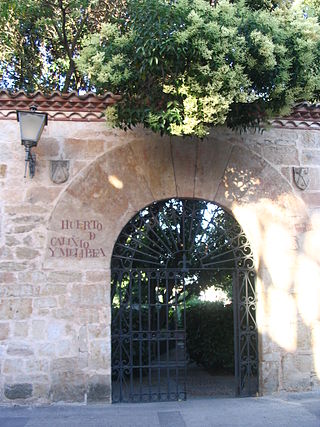
.jpg)
